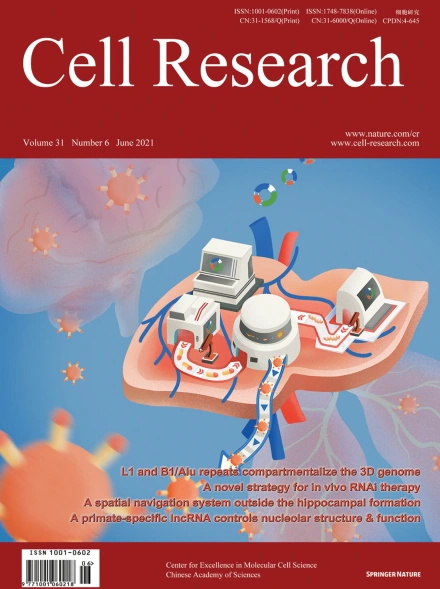
Advanced Search
Submit Manuscript
Advanced Search
Submit Manuscript
Volume 31, No 6, Jun 2021
ISSN: 1001-0602
EISSN: 1748-7838 2018
impact factor 17.848*
(Clarivate Analytics, 2019)
Volume 31 Issue 6, June 2021: 684-702 |
Sequential fate-switches in stem-like cells drive the tumorigenic trajectory from human neural stem cells to malignant glioma
Xiaofei Wang1 , Ran Zhou2 , Yanzhen Xiong1,3 , Lingling Zhou1 , Xiang Yan1 , Manli Wang4 , Fan Li1 , Chuanxing Xie1 , Yiming Zhang2 , Zongyao Huang1 , Chaoqiong Ding1 , Kaidou Shi4 , Weida Li5 , Yu Liu4 , Zhongwei Cao2 , Zhen-Ning Zhang5 , Shengtao Zhou2 , Chong Chen4 , Yan Zhang3,* , Lu Chen2,* , Yuan Wang1,*
1Department of Neurology and Department of Neurosurgery, State Key Laboratory of Biotherapy and Cancer Center, West China Hospital, Sichuan University and National Collaborative Innovation Center, Chengdu, Sichuan 610041, ChinaGlioblastoma (GBM) is an incurable and highly heterogeneous brain tumor, originating from human neural stem/progenitor cells (hNSCs/hNPCs) years ahead of diagnosis. Despite extensive efforts to characterize hNSCs and end-stage GBM at bulk and single-cell levels, the de novo gliomagenic path from hNSCs is largely unknown due to technical difficulties in early-stage sampling and preclinical modeling. Here, we established two highly penetrant hNSC-derived malignant glioma models, which resemble the histopathology and transcriptional heterogeneity of human GBM. Integrating time-series analyses of whole-exome sequencing, bulk and single-cell RNA-seq, we reconstructed gliomagenic trajectories, and identified a persistent NSC-like population at all stages of tumorigenesis. Through trajectory analyses and lineage tracing, we showed that tumor progression is primarily driven by multi-step transcriptional reprogramming and fate-switches in the NSC-like cells, which sequentially generate malignant heterogeneity and induce tumor phenotype transitions. We further uncovered stage-specific oncogenic cascades, and among the candidate genes we functionally validated C1QL1 as a new glioma-promoting factor. Importantly, the neurogenic-to-gliogenic switch in NSC-like cells marks an early stage characterized by a burst of oncogenic alterations, during which transient AP-1 inhibition is sufficient to inhibit gliomagenesis. Together, our results reveal previously undercharacterized molecular dynamics and fate choices driving de novo gliomagenesis from hNSCs, and provide a blueprint for potential early-stage treatment/diagnosis for GBM.
https://doi.org/10.1038/s41422-020-00451-z